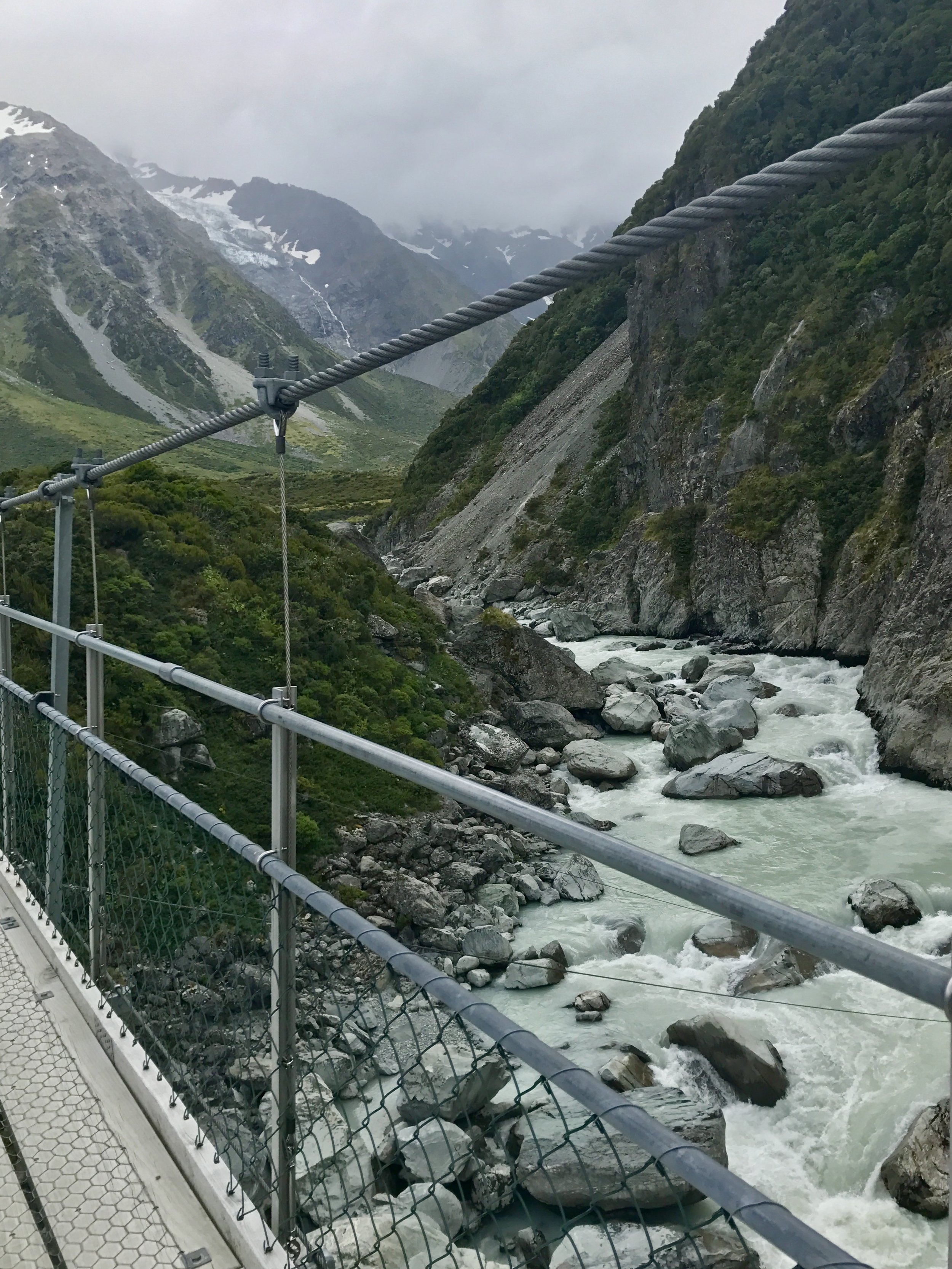Greenland always loomed large on the maps I spent hours poring over during my childhood. This is partly due to its actual size (it’s the largest island in the world) and partly due to land mass closer to the poles appearing more vertically stretched on common map projections. One of the first fun facts I learned about Greenland is that the Vikings named it so to entice more settlers. In reality, the vast majority of Greenland (80%) is covered by an ice cap, and its 55,000 inhabitants live predominantly along its western coast. While Greenland is geographically part of North America, it is politically part of Denmark (and autonomous in a number of ways).
Kangerlussuaq airport, Greenland
Getting to Greenland requires some time and dedication, as the best way to reach it is via a nearly 5 hour flight from Copenhagen to Kangerlussuaq, a small town of about 500 inhabitants and the only airport in Greenland able to handle larger aircraft (originally built as a military base during World War II). Kangerlussuaq is a good jumping off point for visiting the polar ice cap (as a day trip, or more commonly an overnight camping trip), or for internal flights within Greenland. Note that the weather is notoriously fickle; delays and cancellations are not uncommon, so plan accordingly. Upon landing, I took a short flight to Ilulissat, a town further north on the western coast. There are no roads between towns in Greenland—just airplanes, boats, dog sleds, and snowmobiles. I booked all my flights directly (including the roundtrip from Copenhagen) via Air Greenland.
Colourful buildings in the town of Ilulissat
Walking around Ilulissat
While Ilulissat is the third largest town in Greenland, its population is 4,600, so you’ll need to plan ahead for your accommodation and transport. You can visit any time of year, but the summer months, during which the sun never fully sets, tend to be most popular (conversely, during winter there is little daylight). The town itself is a colorful sprawl of houses and buildings made to withstand the harsh winters, with the color of the building indicating its use (yellow for doctors and hospitals, red for teachers and churches, blue for fishermen and fish factories, etc.). After settling into my centrally located Airbnb, I went for a walk through town, finding my way to one of the western viewpoints over the bay. I enjoyed lunch at Cafe Iluliaq, which offers a range of different meals, with both locals and tourists seated outside to enjoy the summer sunshine. For dinner, Inuit Cafe offers perhaps some of the best food in Ilulissat, including a range of local specialties. You’ll also find a couple of supermarkets with a decent array of products, though keep in mind that Greenland imports almost everything except for fish, so prices are high and selection is limited. Note that everything closes quite early, even in summer (unless you happen to be invited to one of the local all-night parties).
Icebergs in Disko Bay
Midnight colours in Disko Bay
That evening, I embarked on a previously booked icefjord boat tour, which turned out to be one of the highlights of the trip. The tours typically depart around 10pm to take advantage of the summer midnight sun. We glided among sunset-tinted icebergs, spotting numerous humpback whales putting on quite the display, flukes playfully raised and blowholes spouting above the sea. The sunset went on for hours after our return, soon turning into a bright dawn.
The next day, I embarked on a kayaking excursion with Ilulissat Adventures around Disko Bay. They provide all the gear, including a drysuit—bring some warm wool layers to wear underneath. In general, layers are key to Greenland, as the average summer temperature in Greenland is about 10C (50F) and can fluctuate significantly. While some days were so warm I could wear a t-shirt, others necessitated protective layers against pelting rain and winds so strong I could barely breathe.
Kayaking in Disko Bay
It felt truly spectacular to be on the water in close proximity to giant icebergs, and a good reminder of how small we are in the larger view. In a similar vein, the spectacular Ilulissat Isfjordscenter (a short walk from the town center), newly constructed and opened in 2021, is also worth a visit. Its unique architecture and informative exhibits are sure to occupy the better part of a couple of hours, and it’s also the start of a couple of short trails to reach the ice cap, a UNESCO World heritage site. Perhaps my favourite part of the whole trip, the Ilulissat Icefjord is at once breathtakingly beautiful, awe-inspiring, and humbling; it will leave you questioning humanity’s role and place on this planet.
Walking from Ilulissat Isfjordscenter to the icefjord
The views and sounds are stunning: this giant, slow-moving glacier, witness to thousands of centuries past, passes slowly before you, iceberg-sized chunks breaking off and echoing, cracking and heaving, into the abyss. It’s at once both larger than life and disappearing before our very eyes: in recent years, the ice sheet has been melting at record levels. Second in size only to Antarctica, Greenland’s ice sheet contains 12% of the world’s glacier ice. Its melting is predicted to result in significant sea level rises worldwide that will change life as we know it over the next few generations.
View of Disko Bay on a short hike from Ilulissat
A good place to continue philosophizing is always over great local food and wine. Koks is an excellent restaurant typically based in another Danish territory, the Faroe Islands. I had the privilege of dining there during my trip to the Faroe Islands a few years back. While Koks constructs a new home for their restaurant in the Faroes, they have established a summer residency in Ilimanaq, Greenland, accessible from Ilulissat via a 90 minute boat ride through even more icebergs. Reservations are recommended well in advance, and you’ll book the boat transfer separately through World of Greenland. Koks in Greenland does not disappoint, focusing on showcasing the best of what the area has to offer in ways that are both delicious and surprising. Afterwards, enjoy a magical sunset-hued ride back to Ilulissat at the end of the evening.
A dish with wine pairing at Koks in Ilimanaq
The town of Ilimanaq, a 90 minute boat ride from Ilulissat
After a few nights in Ilulissat, I caught the local Arctic Umiaq ferry that takes both locals and tourists up and down Greenland’s western coast. I booked a cabin for the 36 hour journey down to Nuuk, Greenland’s capital; while expensive, it afforded a calm and private place to sleep and rest during the day. The ferry is a fun experience and special way to see Greenland, including some tiny coastal villages (some stops along the way required us to launch a dinghy to pick up the passengers and bring them aboard). It’s a basic ship with relatively simple food options (bring snacks and whatever else you might like aboard, including books, games, etc.). It’s typically too windy to be outside for more than a few minutes at a time, though you can disembark at some of the larger ports en route (notably Sisimiut, which was a nice place to stretch my legs and walk around for a couple of hours)—check first on the departure time before disembarking.
The Arctic Umiaq ferry
The town of Kangaamiut seen from the ferry
Nuuk is worth a night or two to get a sense of life in Greenland’s capital and largest town, though it is decidedly less charming than Ilulissat. During my stay, the winds were too strong for most outdoor activities, and the standup paddleboard tour I’d booked was cancelled. This is not uncommon in Greenland, and travelling here during any time of year requires an open mind and flexibility. My flight from Nuuk back to Kangerlussuaq was repeatedly delayed and then cancelled due to the high winds, and I eventually arrived on another flight later that evening once the winds had temporarily relented. As it was after 6pm, nothing was open in Kangerlussuaq (no grocery stores, restaurants, etc., of which there are just a couple to begin with), so be sure to have food with you. I was personally saved by my Airbnb host’s instant ramen supply, for which I am eternally grateful. Kangerlussuaq is largely skippable except as a starting point for an ice sheet tour, a worthwhile experience to see a piece of our planet that may not be around for much longer.
Downtown Nuuk
Downtown Nuuk
Colourful residential buildings in Nuuk
Where to eat and drink
Cafe Iluliaq, Ilulissat
Inuit Cafe, Ilulissat
Koks, Ilimanaq
Killut Cafe, Nuuk
Daddy’s, Nuuk
Godthåb Bryghus, Nuuk
Sarfalik, Nuuk
Restaurant Charoen Porn, Nuuk
Kristinemut, Nuuk
Where to stay
Arctic Umiaq ferry (between Ilulissat and Nuuk)




































































